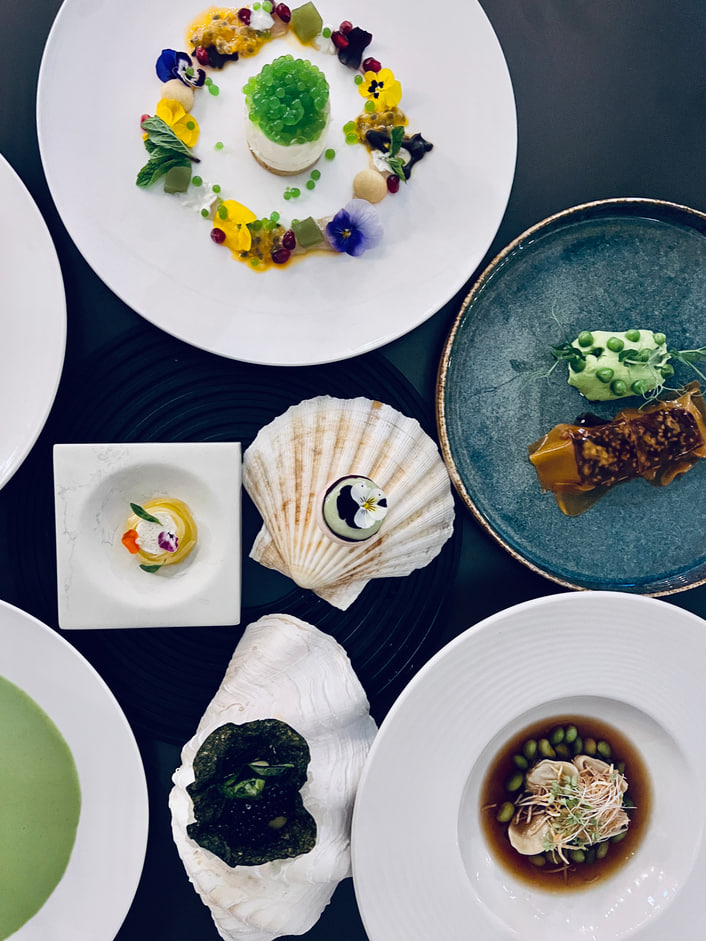In an age of global supply chains and year-round availability, it’s tempting to forget that food has a natural rhythm. But when a tasting menu follows the seasons—when it leans into what the land wants to give—it gains a layer of depth and meaning that no imported truffle or out-of-season berry can replicate.
Seasonality is more than a trend. It’s a philosophy rooted in respect: for ingredients, for terroir, and for time. In this article, we explore how building your tasting menu around nature’s rhythm creates better food, stronger storytelling, and more sustainable kitchens.
1. Why Seasonal Design Matters
At its core, seasonal cooking is about responding to the world as it is, not forcing it to be something else. It makes sense for four key reasons:
- Flavor: Ingredients are more vibrant, aromatic, and alive when harvested at their peak.
- Cost: In-season ingredients are often more affordable due to abundance and proximity.
- Sustainability: Local and seasonal sourcing reduces transportation emissions and supports regional ecosystems.
- Creativity: Constraints fuel innovation. When you’re limited to what nature offers, you explore new combinations, techniques, and expressions.
Great chefs don’t fight the seasons—they collaborate with them.
2. Designing for Each Season: A Culinary Breakdown
Spring
The season of emergence and lightness. Think young greens, tender herbs, and subtle bitterness.
- Ingredients: asparagus, peas, fava beans, ramps, radishes, rhubarb
- Menu approach: brightness, crunch, renewal
- Plating style: fresh, minimal, lots of green tones and edible flowers
Spring menus awaken the palate after winter’s weight—like the first deep breath of morning.
Summer
Abundance, color, and ripeness define this season. Let nature show off.
- Ingredients: tomatoes, stone fruit, corn, zucchini, berries, basil
- Menu approach: juicy textures, vibrant acidity, room-temperature dishes
- Plating style: bold color contrasts, generous portions of produce
Summer invites spontaneity. You don’t need to do much—just showcase what’s already perfect.
Autumn
The most romantic season in the kitchen. Earthy, warm, and soulful.
- Ingredients: mushrooms, squash, figs, grapes, game meats, apples
- Menu approach: roasting, browning, slow infusions, umami layers
- Plating style: rustic elegance, dark ceramics, golden tones
Autumn menus are about richness and reflection. A return to comfort.
Winter
Time to dig deep—into roots, preservation, and deeper flavors.
- Ingredients: beets, cabbage, potatoes, citrus, preserved items (ferments, pickles)
- Menu approach: braises, infusions, spice, slow textures
- Plating style: moody, refined, minimalist—let quiet flavors speak
Winter challenges us to be resourceful, but it also allows us to tell profound stories through transformation.
3. Building the Arc: Menu Structure Through the Seasons
Designing a seasonal tasting menu is about more than choosing ingredients—it’s about storytelling.
- Start with what’s fresh and reverse-engineer your course ideas.
- Echo ingredients across the menu in different forms (e.g., spring peas raw, then puréed, then pickled).
- Use preserved elements to create continuity (e.g., using fermented tomato water from summer in a winter broth).
- Honor transitions: Shoulder seasons (late spring, early autumn) can blend ingredients to bridge two moments in time.
Just as a symphony has movements, your seasonal menu should have flow.
4. Working with Producers & Farmers
A truly seasonal menu often begins with relationships, not recipes.
- Build partnerships with local farms and foragers
- Let them guide what’s best each week—rather than asking for specific items
- Visit markets regularly to build intuition about timing and quality
- Feature your producers on the menu to deepen the guest experience
When you cook seasonally, you become part of a larger ecosystem—and your guests feel that connection.
5. The Guest Experience: Tasting Time and Place
A seasonal menu doesn’t just feed the stomach—it orients the guest in place and time. It says:
“You are here. This is now. This can only happen today.”
That’s what makes it unforgettable.
Guests may not consciously recognize every ingredient’s seasonality, but they feel it. A summer tomato at its peak has an emotional resonance that no refrigerated, imported one ever will.
And when your menu changes with nature, returning guests discover something new every time—an evolving narrative.
6. Tips for Implementing Seasonal Design
- Create a seasonal menu framework with flexible slots for ingredient changes
- Keep notes on previous seasons: what worked, what didn’t, what surprised you
- Preserve excess during peak months—vacuum seal, ferment, dry, and freeze for use later
- Involve your team in seasonal brainstorming to build buy-in and fresh ideas
- Communicate the seasonality in your dish descriptions, menus, and service language
Seasonality doesn’t mean chaos—it means designing systems that embrace change.

